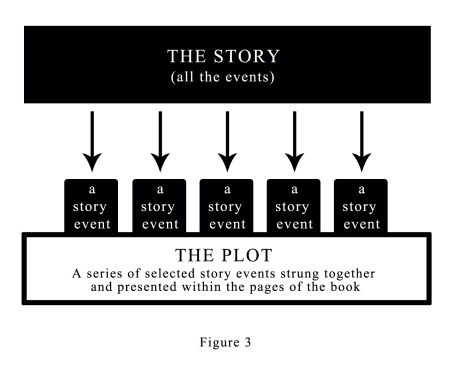If you’ve spent any time in an MFA program you’ve probably heard the term profluence. At my first MFA residency the word was thrown around as readily as dialog or plot. But I was mystified by it. I’d never heard it before. In fact, it shows up three times in the list-poem I wrote after residency (which I posted on this blog and titled: inadequate). But the word itself is a bit elusive. When you type it into a word document, it actually comes up as a misspelling. And when I asked non-writer friends about it, they’d never heard of it too.
So what is profluence? And why do I need to know about it?
It’s derived from the word profluent, meaning to flow smoothly or abundantly forth. But as a writing term it was coined by John Gardner. In The Art of Fiction he says:
“By definition – and of aesthetic necessity – a story contains profluence, a requirement best satisfied by a sequence of causally related events, a sequence that can end in only one of two ways: in resolution … or in logical exhaustion” (53).
He goes on to say that this is the “root interest of all conventional narrative,” and the reader must be “intellectually and emotionally involved … [and] led by successive seemingly inevitable steps … to its relatively stable outcome” (55).
So what does that mean?
In a way, profluence is about the paradox of time. It addresses the flow of time in the story itself, as well as the outward necessity of time needed for the reader to experience the story. Profluence is the cause-and-effect connective tissue that constructs the flow of time in the story world, as well as the underlying engine that makes the novel coherent to a reader. No wonder it’s such a big MFA buzz word.
Gardner says:
“A basic characteristic … [of] narrative, so far as form is concerned, is that it takes time. We cannot read a whole novel in an instant, so to be coherent, to work as a unified experience … narrative must show some profluence of development. What the logical progress of an argument is to non-fiction, event-sequence is to fiction. Page 1, even if it is a page of description, raises questions, suspicions, and expectations; the mind casts forward to later pages, wondering what will come about and how. It is this casting forward that draws us from paragraph to paragraph and chapter to chapter. At least in conventional fiction, the moment we stop caring where the story will go next, the writer has failed, and we stop reading” (55).
In its basic form, profluence is a concept regarding the movement that draws us from “paragraph to paragraph and chapter to chapter.” Blogger, Michael Hill, refers to profluence as “the sense that we are getting somewhere.” It’s an energy or inertia. It’s the connective tissue that moves you from one page to the next. Profluence is that which moves the story to flow smoothly and abundantly forth.
And without it, your book is dead in the water.
Sources:
Byrd, Syd. “Profluence.” Short Story Craft Blog. Oct. 21. 2005. Web: Feb 12. 2013.
Gardner, John. The Art of Fiction. New York: Vintage Books, 1983. Print.
Hill, Michael. “Coaching Profluence for Motivation.” Situated Geekery Blog. April 6. 2010. Web: Feb 12. 2013
Photos by Helen E. Allen and Michael Blan.








Thanks for the introduction to some MFA content. Because I’ve studied literacy education, profluence looks like fluency, which is the ability to read smoothly, coherently and with expression, except in reference to storytelling. I know I’m oversimplifying, but it helps me grasp the term.
I like to define it simply as forward motion. As you so nicely wrote, it’s our challenge to write in a way that keeps forward momentum– else the reader put down the book to get a… ahem… cheese sandwich.